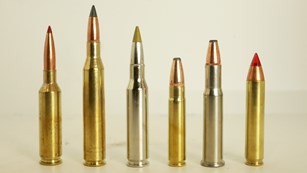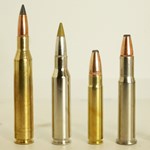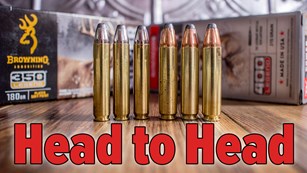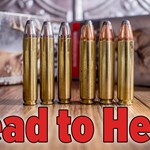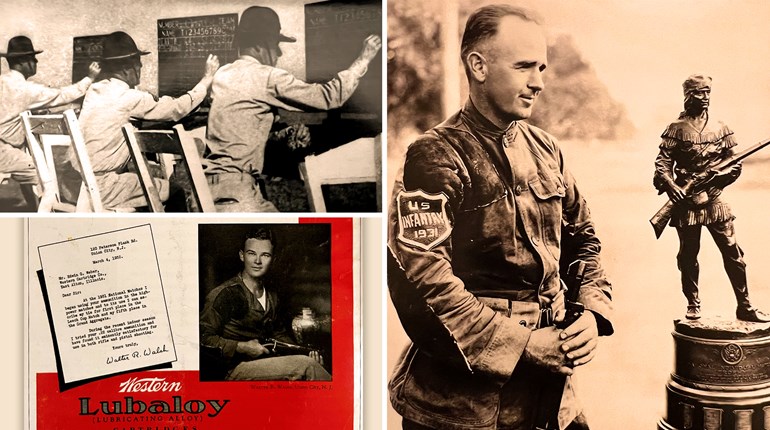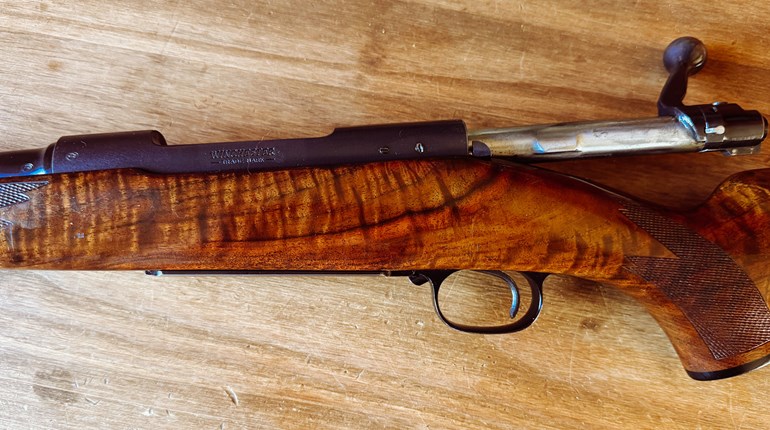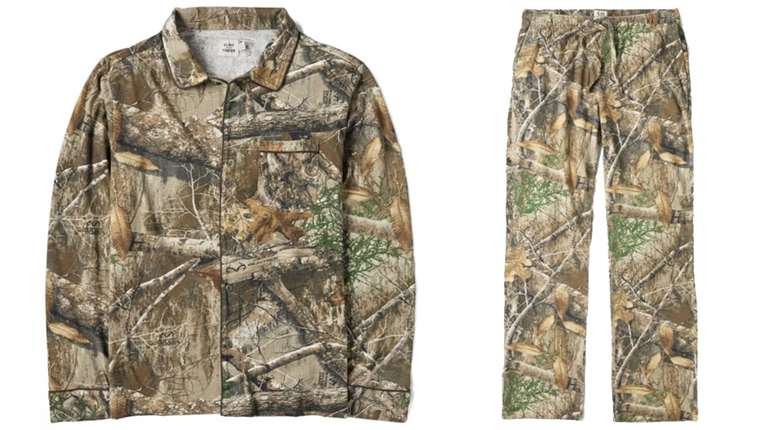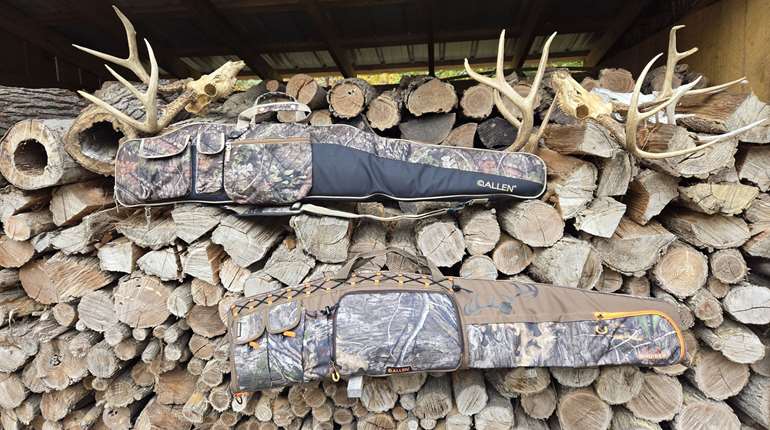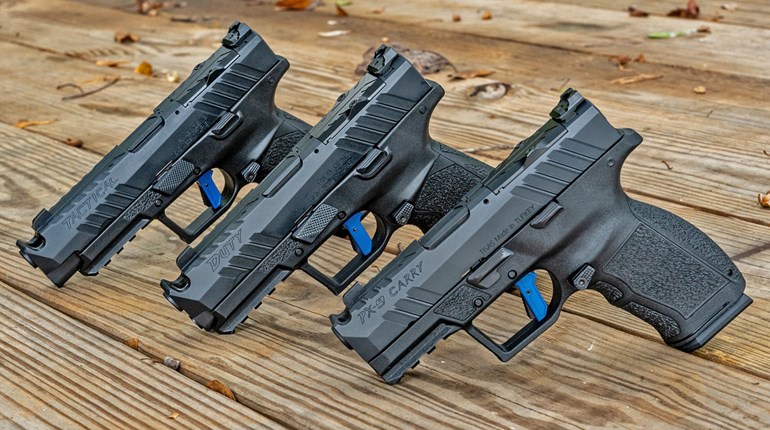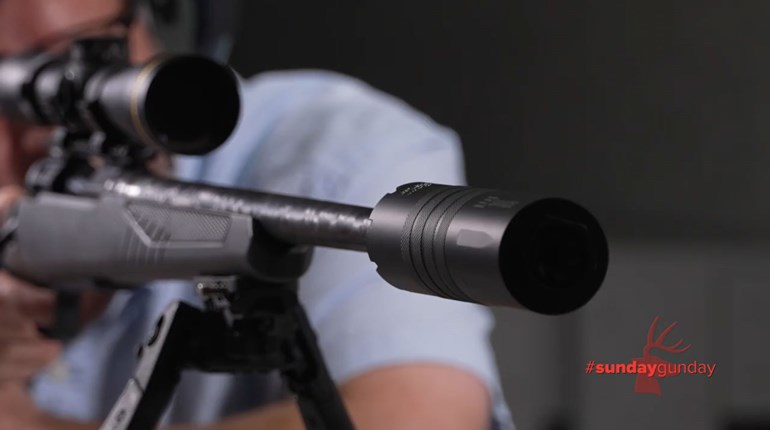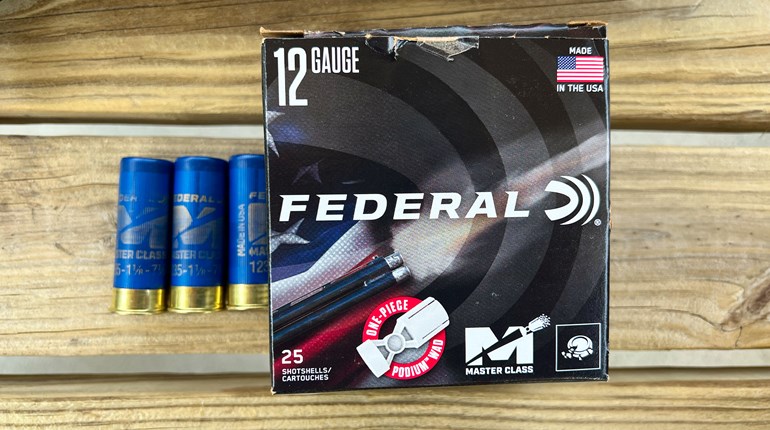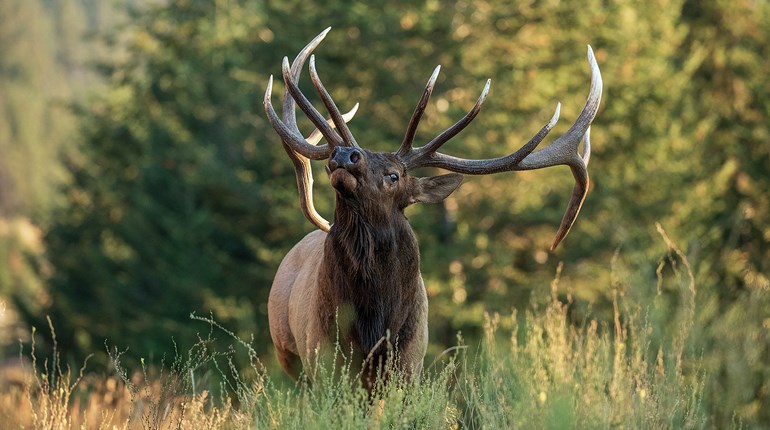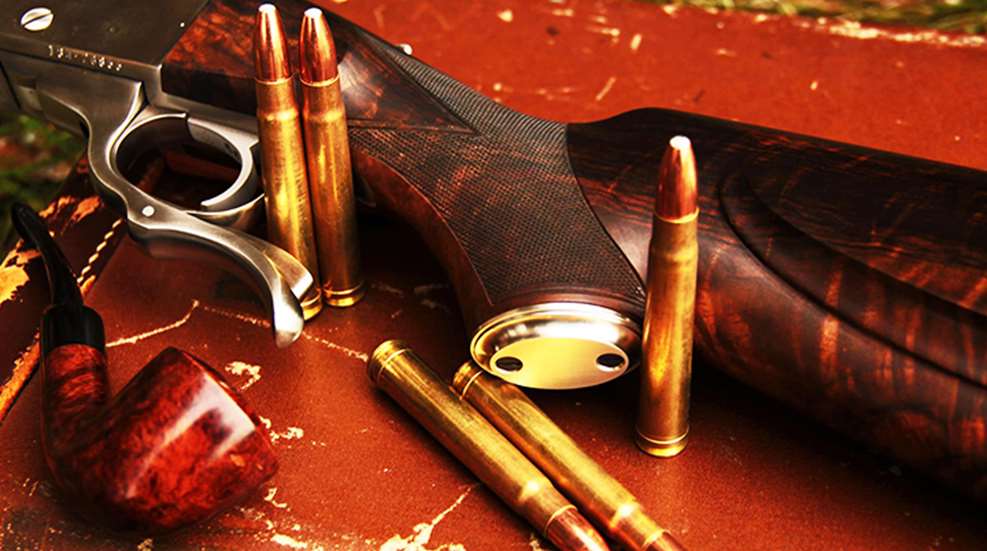
I had just returned from my first out-of-country hunting trip; my Dad and I had hunted moose in Quebec among those willow bogs and innumerable lakes, and though we came home empty-handed, it was life changing. I had but one serious big game rifle at the time—a Ruger Model 77 MKII in the do-all .308 Winchester—and based on the sheer size of the moose we did see, I was convinced I needed a bigger rifle.
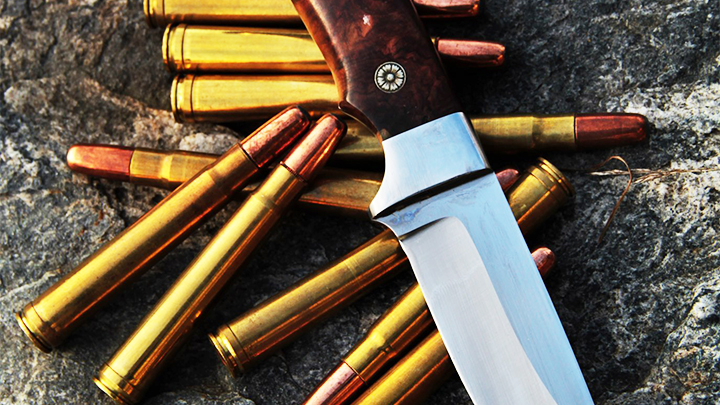
I headed to the local gun shop in search of a .338 Winchester Magnum, a cartridge I thought might mate well with any .30-caliber cartridge, and which would handle all of North America (I had no idea that Africa would grab hold of me soon). “We don’t have a .338 in stock right now, but if you don’t mind a bit more case capacity and bullet weight, we’ve got a used Winchester Model 70 in .375 H&H Magnum. It’s a favorite in Alaska.” Long story short, I walked out with that rifle, and fell deeply in love with the long, sleek belted cartridge; so much so that it would influence my travel plans.
There is something about this century-plus old cartridge that allows it to maintain its position at the top, remaining what I have often called “the most useful cartridge ever designed.” There have been attempts to unseat the King of the Mediums, though as of yet, they’ve been unsuccessful. Perhaps it is the fact that the .375 H&H Magnum has a classic blend of sensible ballistics, British charm, inspiring design and user-friendliness.
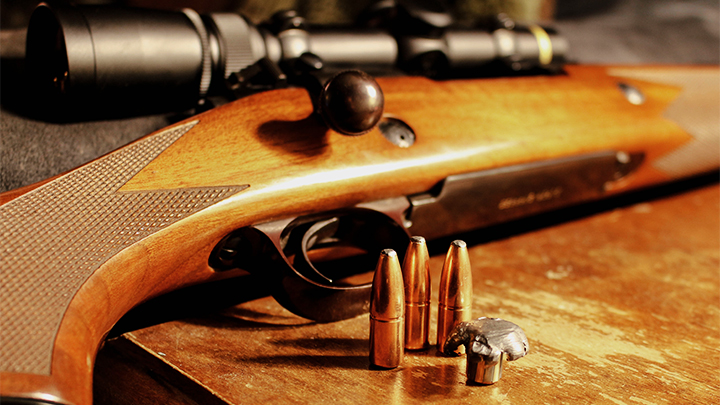
Perhaps it is the longevity of the cartridge’s performance around the globe—it is equally at home in Alaska, Africa and Australia, and was embraced in India when hunting was open—in the hands of both Professional Hunters, guides and visiting sportsmen alike. Perhaps part of the allure is that for most of us, a 7mm or .30-caliber cartridge will suffice for nearly all of our hunting tasks, and that the step-up to the .375 may well represent the adventure of dangerous game. Nonetheless, the three-seven-five developed a head of steam after the conclusion of the First World War and knocked a good many cartridges—including a couple of my favorites, the .318 Westley Richards and the .350 Rigby Magnum—off the stage.
Mechanically speaking, the .375 H&H Belted Magnum was one of the first belted cartridges—Holland & Holland’s Velopex—released in 1912. The belt of brass allowed the cartridge to feed smoothly from a magazine, yet provided headspacing similar to a rimmed cartridge. The gentle 15-degree shoulder allows the cartridge to give excellent neck tension—the .375 rarely requires a roll crimp—yet assuredly aids in that smooth feeding. The case measures 2.85 inches, with an overall cartridge length of 3.600 inches. Bullet weights will range from 235 grains to 350 grains, with the most common choices coming in at 270 and 300 grains. The muzzle velocities will range from over 2850 fps for the 235-grain load, to just under 2700 fps for the 270-grain loads. The classic 300-grain loads run between 2450 fps and 2550 fps (generating over 4,300 ft.-lbs. of energy), and the heavy 350-grain leaves the muzzle at 2300 fps. And, the .375 H&H Magnum shoots rather flat for a cartridge of its size. Using the Federal 300-grain Swift A-Frame load at 2450 fps and a 200-yard zero, you’ll see the bullet strike just 12 inches low at 300 yards.
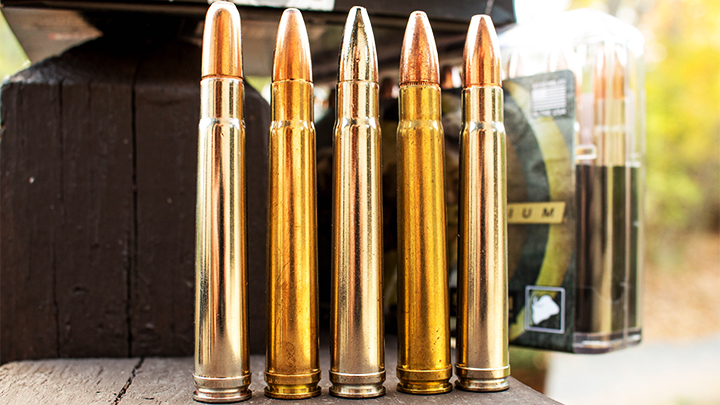
There are all sorts of projectiles available for the .375 H&H, from the traditional cup-and-core bullets, to bonded core designs, to polymer tipped bullets, to the monometal hollowpoints; the Federal Trophy Bonded Bear Claw, Swift-A-Frame and Barnes TSX are very popular among African professional hunters (PH) and their clients. There are excellent solid (non-expanding) bullets like the Barnes Banded Solids, Woodleigh Hydro Solid, Federal Trophy Bonded Sledgehammer Solid and more.
The beauty of the .375 H&H is the relatively mild recoil, especially in comparison to the true big-bore cartridges. Almost any shooter can learn to handle the cartridge effectively, especially on a rifle which is properly stocked for them, and I’m absolutely certain that a 300-grain .375 H&H bullet in the right place is better than a 500-grain bullet in the wrong place. There are all kinds of rifles chambered for the .375 H&H, from the classic Winchester Model 70 Safari Express and the Browning X-Bolt Medallion Safari up through the Kimber Caprivi and Dakota Model 76 to the Heym Express by Martini and Rigby Big Game rifles.
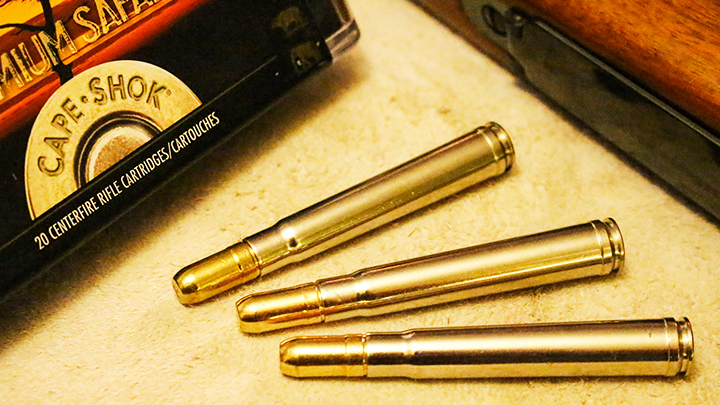
With the lighter bullets, the .375 handles black bear, deer, elk and caribou, the 270- and 300-grain slugs handle nearly everything from larger African plains game, cats, buffalo and elephant, as well as brown bear and bison here in the States. The 350-grain softpoints and solids are sound choices for Cape buffalo and elephant (solids only on elephant) as the additional sectional density will only enhance the already superb penetrative qualities of the .375 H&H.
The .416s, .404 Jeffery, .458s, .470 and .500s surely have more stopping powder, and the .300 magnums shoot flatter, but few other cartridges possess the versatility of the three-seven-five. It conjures images of Wally Johnson and Harry Manners taking ivory in the wilds of Mozambique, of John ‘Pondoro’ Taylor’s praise for its performance across the board, of giant coastal brown bears in Alaska, and of what may have been the single most dramatic kill I've seen, when my buddy John swung his Heym Express .375 H&H on a running water buffalo in Australia and crumpled it like a piece of paper. And, it brings back many personal memories of hunts from Canada to Africa to the Adirondacks.
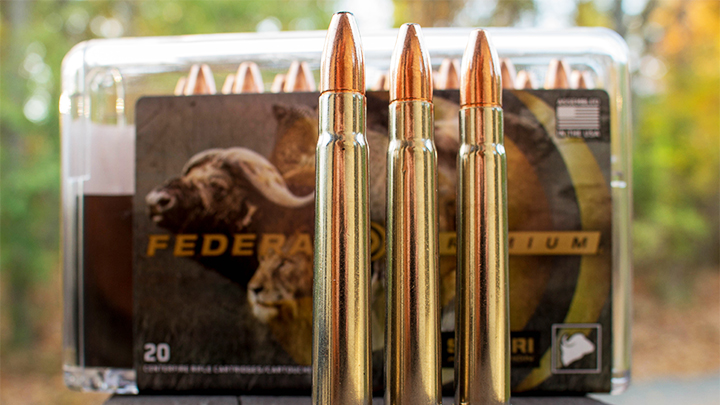
Yes, the .375 Ruger mirrors the ballistics of the H&H, and the .375 Weatherby Magnum, .375 Remington Ultra Magnum and .378 Weatherby all better the velocity; sometimes by over 400 fps, but at the cost of a severe increase in recoil and bullet strain. There are those who frown upon the belted cartridges, and their tendency to stretch just above the belt, but I’ve never found it to be an issue. And while I’ve long championed the .404 Jeffery and .318 Westley Richards—because of their performance and for the nostalgia alike—I must admit that the .375 H&H Magnum, which is readily available around the world, makes the single smartest choice for the traveling hunter who pursues a wide variety of game. Long live Holland & Holland’s .375!
Want to read more from Philip Massaro? Check out the following articles:
• An Ode to the Winchester Model 1886
• An Ode to the Winchester Model 70
• 6 Ways to Fine-Tune Your Hunting Rifle
• Review: Heym Model 26B Double Rifle .45-70
• 5 Reasons the .300 Win. Mag. Rules the Roost
• Bolt-Action Rifles: Push-Feed vs. Controlled-Round-Feed
• Scope Magnification: How Much is Too Much?
• A Hunter's Guide to Staying Sane During the Coronavirus Outbreak
• Is Walnut Dead? Synthetic vs. Wood Stocks
• Rifles for the Traveling Hunter
• Top 5 Lever-Action Rifle Cartridges
• African Game Meat: What Happens After the Shot?
• Top 5 Underrated Deer Cartridges
• Top 5 Double Rifle Cartridges
• Deer Hunting: Were the Good Old Days Really That Good?
• Essential Gear for the Traveling Hunter
• 4 Reasons to Hate the 6.5 Creedmoor
• 4 Ways to Fine-Tune Your Rifle During the Off Season
• Review: Savage Model 110 AccuFit System
• Top 8 Bullets for African Plains Game
• Review: Tikka T3X Lite
• Top Bear Rifles and Loads
• 3 Rifle Cartridges to Hunt the World
• Why My Cartridge is Better Than Yours
• Top 5 Handgun Hunting Cartridges
• An Ode to the Ruger Model 77
• Top 5 Hunting Cartridges of the 21st Century
• Top 5 Deer Bullets for 2018
• An Ode to the .30-30 Winchester
• 5 Reasons to Book a Spring Bear Hunt
• An Ode to the Ruger Mini Thirty
• Boattail vs. Flat-Base Bullets
• How to Build a Custom Rifle
• Choosing a Cartridge for North America's Big Game
• Top 5 American-Made Hunting Rifles
• How to Choose a Buffalo Rifle
• An Ode to the .223 Remington
• Top 5 Coyote Cartridges
• The Ultimate Long-Range Hunting Cartridge
• The Greatest Whitetail Cartridge Ever Designed
• An Ode to the Browning BAR
• Top 5 Bear Bullets
• Do You Really Need a Magnum Cartridge?
• Why the Ruger No. 1 is Not No. 2
• Top 10 Mythical Game Species
• Top 5 Monometal Soft-Point Bullets
• Top 5 Subsonic .22 Long Rifle Loads
• The Most American Rifle Cartridge
• Tips for the Traveling Hunter
• How to Choose a Gun Safe
• Best Gun Cases for the Traveling Hunter
• An Ode to the .30-06 Springfield
• Top 5 Boutique Bullet Companies
• Top 5 .22 Long Rifle Loads
• 5 Reasons Round-Nose Bullets Are Still Cool
• Top 5 Dangerous Game Loads
• Top 5 Turkey Loads
• 5 Rifle Cartridges That Need to Make a Comeback
• Top 5 Safari Calibers
• 5 New Year's Resolutions for Hunters
• What Your Favorite Rifle Cartridge Says About You
• America's Most Wanted Cartridges
• America's Strangest Game Laws
• What Your Favorite Rifle Cartridge Says About You, Part II
• Top 5 Overrated Rifle Cartridges
• Top 5 Underrated Rifle Cartridges
• 5 Reasons to Handload Your Ammunition
• 5 Cartridges You Might Not Know About
• Top 5 Wildcat Cartridges
• An Ode to the Ruger Mini-14
• Top 5 Hog Loads
• Why .30-30 Winchester Will Never Die




